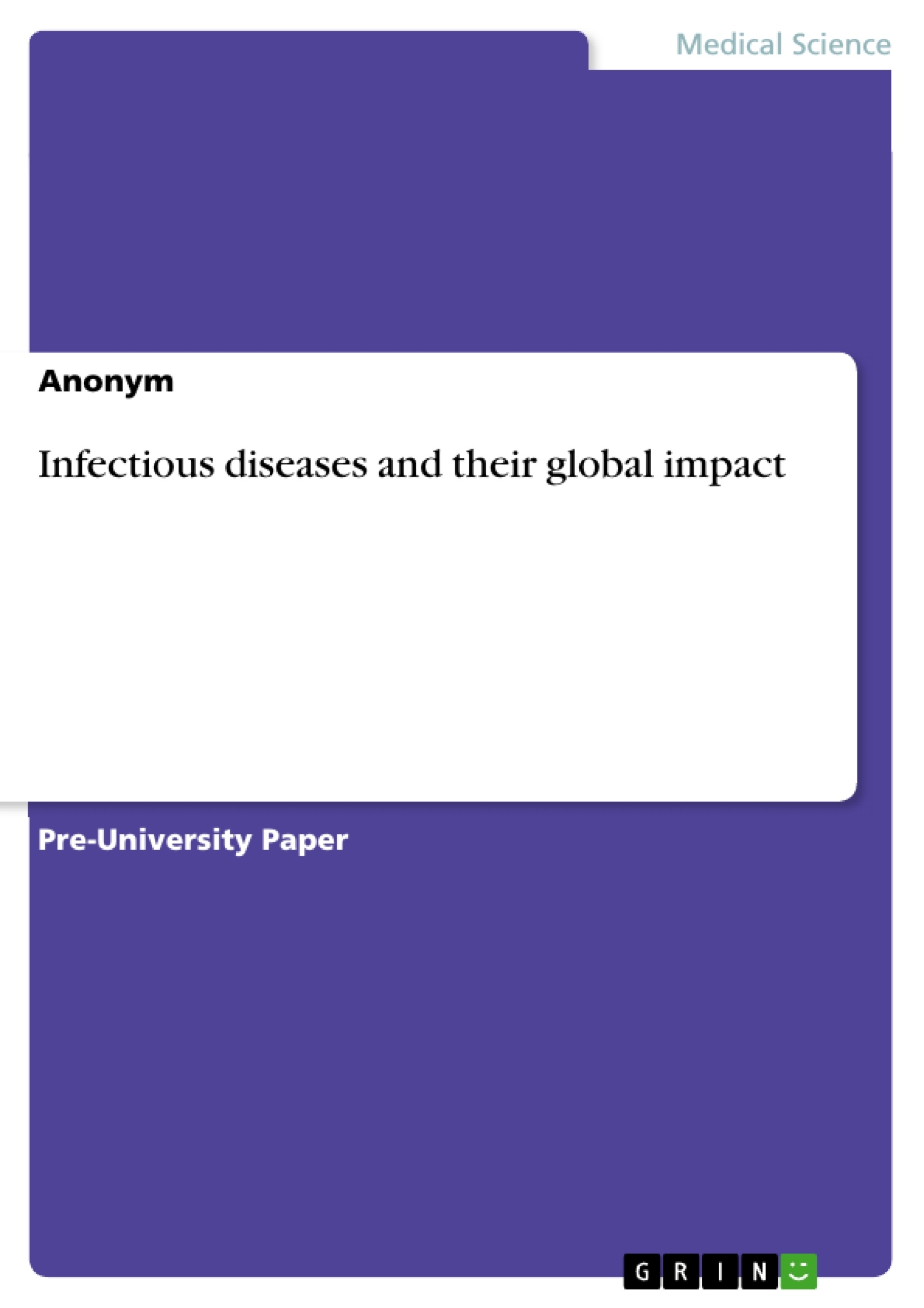Most infectious diseases are highly infectious and spread easily and widely. They cannot be spatially limited in a well connected, industrialized and globalized world. So do infectious diseases have a global impact? If so, then how big is this impact? Does it predominate all positive factors like fast travel to ulterior region, access to internet in almost the whole world, etc.? Those questions will be discussed in this paper.
Inhaltsverzeichnis (Table of Contents)
- A) Foreword
- B) Global impact of infectious diseases
- I) Explaining medical and technical terms
- II) General information about infectious diseases
- 1) Pathogenic microorganism
- 2) Types of infectious diseases
- III) Transmission
- 1) General transmission routes
- 2) Ebola and HIV
- IV) Epidemics example Ebola 2014
- 1) Outbreak in West Africa: spreading route
- 2) Triggered by a pathogenic microorganism
- 3) Methods used for restricting
- V) Prevention
- 1) Immune system preventing infectious diseases
- 2) Vaccines preventing the outbreak of infectious diseases
- 3) General tips to reduce the risk of transmission
- VI) Treatment
- 1) Phage therapy
- 2) Bacteriocins
- 3) Killing factors
- C) Resumé
Zielsetzung und Themenschwerpunkte (Objectives and Key Themes)
This paper aims to explore the global impact of infectious diseases. It examines the interconnectedness of globalization, travel, and the spread of infectious diseases, highlighting the potential risks and challenges posed by these factors. The paper also explores the role of medicine and the impact of antibiotic resistance, organ transplantation, and the emergence of new diseases. Finally, it addresses the issue of social inequality and its influence on the prevalence and incidence of infectious diseases.
- The global spread of infectious diseases in a connected world
- The impact of globalization on disease transmission
- The role of medicine and medical advancements in combating infectious diseases
- The emergence of new diseases and the challenges they pose
- The influence of social inequality on the spread of infectious diseases
Zusammenfassung der Kapitel (Chapter Summaries)
- Foreword: This section introduces the topic of infectious diseases and their relevance in a globalized world. It highlights the increasing mobility of people and the potential for rapid disease transmission through travel and urbanization.
- Global Impact of Infectious Diseases: This chapter explores the various aspects of infectious diseases, including the definition of key medical and technical terms, a general overview of pathogenic microorganisms and transmission routes, and examples of specific outbreaks such as Ebola in 2014.
- Explaining Medical and Technical Terms: This section provides clear definitions of important terms related to infectious diseases, ensuring a better understanding of the topic for the reader.
- General Information about Infectious Diseases: This chapter delves into the nature of pathogenic microorganisms, discussing different types such as bacteria, fungi, viruses, and protozoa, and explaining their mechanisms of infection and propagation.
- Transmission: This section explores the various routes of transmission for infectious diseases, including general transmission routes and specific examples like Ebola and HIV.
- Epidemics Example Ebola 2014: This chapter focuses on the Ebola outbreak in West Africa in 2014, analyzing its spreading route, the pathogenic microorganism responsible, and the methods used to restrict its spread.
- Prevention: This section discusses various strategies for preventing infectious diseases, including the role of the immune system, the importance of vaccination, and general tips for reducing the risk of transmission.
- Treatment: This chapter explores different treatment options for infectious diseases, including phage therapy, bacteriocins, and killing factors.
Schlüsselwörter (Keywords)
This paper examines the global impact of infectious diseases, focusing on concepts such as globalization, disease transmission, medical advancements, antibiotic resistance, organ transplantation, emerging diseases, social inequality, and the prevalence and incidence of infectious diseases.
- Quote paper
- Anonym (Author), 2018, Infectious diseases and their global impact, Munich, GRIN Verlag, https://www.grin.com/document/1191694



